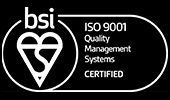Ransomware by the Numbers
10% of all breaches include ransomware
48% of UK organisations fall victim to ransomware
13% of UK victims paid the ransom in 2022
32% of UK companies have cybersecurity insurance that doesn't cover ransomware.
Our Approach to Conducting a Ransomware Readiness Assessment
We adopt the same rigour, discipline and evidence-based approach to all our assessments. In Phase 1, we are in a 'fact-finding' mode and want to read and consume all the necessary information. This can take as little as a few hours or days, depending on the size of your organisation.
In phase 2, we dive into the Ransomware Readiness Assessment. We will need to speak with someone who has the experience, the organisational context and the holistic awareness of the business. We then finish the assignment with a management report.
Key Areas of Assessment
01
Data Protection and Recovery
We evaluate your data backup and recovery capabilities to ensure you can restore critical systems in the event of a ransomware attack. This includes examining backup frequency and retention policies, offline/segregated backup storage, recovery time objectives and procedures, and testing of restore capabilities.
02
Security Controls and Prevention
We assess your preventative security controls to identify gaps that could allow ransomware to infiltrate your systems. This covers email security and anti-phishing measures, endpoint protection solutions, network segmentation, patch management processes, and user access controls and privilege management.
03
Detection and Response
We evaluate your ability to detect and respond to ransomware attacks in their early stages by assessing security monitoring capabilities, incident response procedures, threat hunting activities, alerting and escalation processes, and 24/7 coverage assessment. We also review your security governance framework and staff awareness programs, including security policies and procedures, employee security awareness training, executive-level engagement, third-party risk management, and regulatory compliance considerations.
04
Comprehensive Reporting
Our assessment concludes with a detailed report that includes an executive summary of key findings, detailed technical assessment results, risk-based recommendations prioritised by impact, roadmap for remediation activities, and benchmarking against industry standards and best practices.






